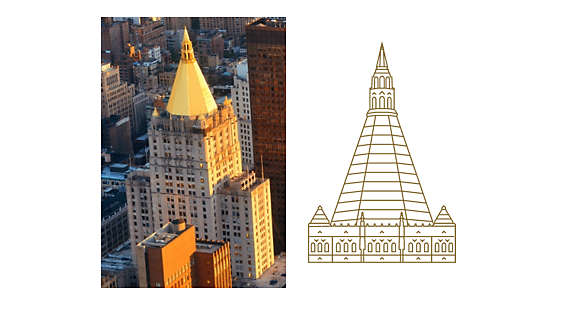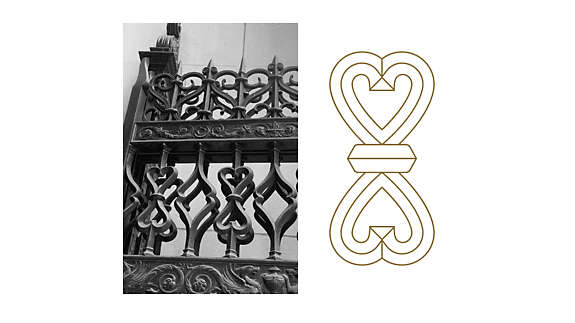History
A history of 51 Madison Avenue: from P.T. Barnum's circus to our home office.
New York Life | October 29, 2021

Above image: An illustration of the interior of P.T. Barnum's Grand Roman Hippodrome, Thursday, March 5, 1874.
The site where the New York Life Building currently stands — at 51 Madison Avenue — possessed great historical significance even before New York Life’s arrival.
From the 1850s–1871, the site was home to a passenger station for the New York, New Haven and Hartford Railroad. The Madison Avenue Station became unnecessary with the opening of Grand Central Terminal on 42nd Street in 1871, and the space was rented to P.T. Barnum, who converted it into his famous Hippodrome, which opened in 1874. Barnum was proprietor of a traveling circus (which would later be a constituent of Ringling Bros. and Barnum & Bailey Circus) and intended the site to house a permanent show separate from his road show that would feature circus acts, chariot races, and a menagerie.
The Hippodrome would prove short-lived, closing after the 1875 season, but it would establish the site as a New York entertainment hub. In 1879, the Hippodrome reopened as a live event venue under a new name, “Madison Square Garden.” That venue would be torn down and replaced by a better-known second Madison Square Garden in 1890. The second Madison Square Garden was an architectural marvel in its time. Designed by Stanford White, it featured an enclosed arena, theatre, restaurant, ballroom, and rooftop garden. Over more than 30 years, it hosted societal and political functions and popular amusements, including Buffalo Bill's Wild West Show, boxing bouts, concerts, Ringling Bros. and Barnum & Bailey Circus, and political conventions.
As New York Life was outgrowing its Lower Manhattan home at 346 Broadway, the company set out to build a new Home Office. New York Life acquired the second Madison Square Garden at a 1916 foreclosure auction. It was the only bidder. The company leased the building out to a promoter until around 1924, when it began preparations to demolish the property and build its Home Office on the site. The second Garden was finally torn down to make way for the New York Life Building in 1925. (A third Garden was built that same year further uptown, and the current Madison Square Garden was built in 1968.)
The 40-story, Gothic Revival-style New York Life Building was designed by Cass Gilbert, who also designed New York’s Woolworth Building and the U.S. Supreme Court Building in Washington, D.C. With planning for the new Home Office underway, New York Life President Darwin Kingsley compared building a great life insurance company to building a great cathedral – writing how both demonstrate clarity of purpose, aspirational design, the ongoing labor of countless generations, and an unwavering perspective of permanence in what’s being built. He wrote: “As cathedrals were built, so are great life insurance companies. Its foundations are as deep as human love; its spires disappear in unfulfilled dreams of human aspiration; its great arches support an expanding nave which can cover and protect all who come.”
The limestone “Cathedral of Insurance” opened for business in November 1928. Today, we can see the spirit of Kingsley’s words in what we refer to as our brand pillars: Love, Fortitude, Human Progress.
To realize Kingsley’s vision, Cass Gilbert looked to the Salisbury Cathedral in England for design inspiration. Salisbury Cathedral was long considered one of the finest examples of Gothic architecture. It had been an iconic part of England’s landscape for over 700 years. The architects and builders of Salisbury knew that in order to achieve magnificence, their design would require the strength and stability to push up the ceiling — weight and counter-weight — so that the resulting tension would provide eternal balance. This would create a place of reflection and guidance, where people could prioritize and take steps for their life ahead.
It was added to the National Register of Historic Places as a National Historic Landmark in 1978 and designated a historic landmark by New York City’s Landmarks Preservation Commission in 2000. The building contains nearly 1 million square feet of working space, 38 elevators, 2,200 windows, and 72 gargoyles. The iconic pyramidical dome is made with gold-dipped ceramic tiles and was refurbished in 1995 to mark New York Life’s 150th anniversary.
Architectural Highlights
Gold dome:
The gold dome has made the Home Office an iconic part of the New York City skyline since the building’s opening in 1928. Surrounded by corner turrets, arched windows, finials, and an open parapet, the octagonal pyramid rises six stories above its base on top of the 34th floor. At the pinnacle stands an 18-ton lantern and spire.
On April 12, 1985, in celebration of New York Life’s 140th Anniversary, the gold dome was illuminated for the first time. The next day, The New York Times described the lighting as adding “a new star in the skyline.” It has remained lit ever since.
Bronze “heart” gates:
The exterior of the Home Office features a series of arches around six entrances. Each entrance incorporates an extensive use of ornamental bronze, including iconic gates forged with interconnected hearts. In total, the bronze gates at the entrances of the Home Office contain 448 interconnected hearts, each designed to evoke a sense of strength, love, and interdependency.
Bronze lanterns:
The exterior bronze gates and doors give way to a high interior arcade with a barrel-vaulted gold-leaf ceiling, marble walls and floors, and great windows at each end. Two smaller arcades intersect the main arcade, and the entire space is illuminated by large bronze lanterns — a design decision made by Gilbert to give the Home Office more of the feeling of a great cathedral.


RELATED CONTENT
Go back to our newsroom to read more stories.
Media contact
Kevin Maher
New York Life Insurance Company
(212) 576-7937
Kevin_B_Maher@newyorklife.com
